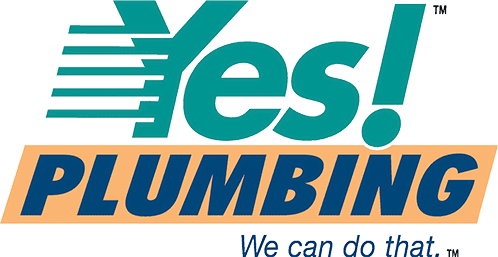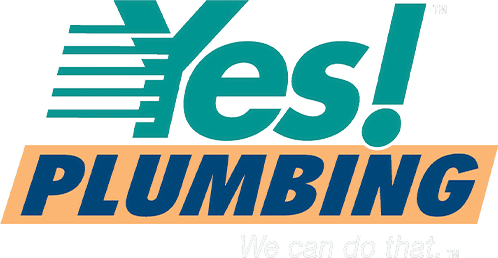One of the most common problems we run into in Tinley Park and Orland Park as well as in Schererville, Indiana is plugged up bathroom drains. Plugged toilets, lavatories or face bowls, tubs and showers are a common problem in homes throughout the area.
Causes of the problem vary and the age of the homes with the problems range from less than a year to over 80 years old.
In newer homes, say under 10 years old, the clogged drain can usually be traced to one of two problems. The first and by far the most common in newer homes is the presence of a foreign object in the drain, and as homes age, mineral and waste buildup can be added to the mix. Today we’re going to focus on clogged toilets as, believe it or not, it’s a subject for lengthy discussion.
Sometimes is just an “overload” that causes a blockage and this is sometimes the easiest to handle. To solve this problem, simply take a good (not cheap) household plunger and plunge away. The rapid back and forth movement of the waste caused by the plunger is usually enough to clear the blockage allowing the homeowner to “move” on, so to speak. If the plunger turns out to be only a temporary fix (the problem keeps recurring), or won’t work at all, then it may be an indication of a defective toilet, worn out toilet, or more likely, a foreign object wedged in the trapway (toilet drain). There are times when even human waste needs more than just a plunger to clear. I’ve run across this situation when people are taking narcotic painkillers after surgery or are on consistent pain medication due to a chronic medical problem. When this is the case, the patient sometimes becomes constipated and can produce fecal matter that is literally as hard as a stone.
Also, many times a small lotion bottle, hair brush or comb has fallen off the toilet tank and gotten jammed in the trapway where it can’t be seen causing a slow flush or no flush and even overflow situations. These situations will require more than a plunger to resolve. If this is the case then you should try to use a tool called a closet auger.
This tool can be purchased at any reputable Plumbing Supply house. But do yourself a favor and don’t go cheap on this one. Just our word for it, a cheap closet auger is just an aggravation waiting to happen. Get that thing caught on a comb and you may wind up buying a new toilet. You’re going to spend around $65-$85 for a professional grade auger if you want to try it yourself. Believe it or not, it does take some skill to know when to crank it, which way to crank it, how much pressure to use to push it and how to recognize when you’ve either pushed the object through or hooked it and can try to pull it out? Even when you have over 40 years under your belt like me (25 of those at Yes! Plumbing), you can’t always clear a toilet with just a closet auger. When you think you may have forced the blockage out, ALWAYS test the toilet by throwing 5 or 6 good size wads of toilet paper in the bowl and flush. Repeat this at least 4 times. If it’s satisfactory, you are done.
If the toilet still doesn’t flush properly with the toilet paper test, you will need to check the trapway for a blockage. For the first step, you will need a retractable mirror and a flashlight. Extend the mirror and place the mirror head in the bowl of the toilet. Angle the mirror head so that when it is in the bottom of the trapway you can see the top of the trapway. Use the flashlight to illuminate the dark trapway by shining the flashlight on the mirror so the reflected light illuminates the part of the drain you are trying to see. If there is no foreign object in the drain or other obvious reason for the toilet to be flushing slowly or plugging up with toilet paper, you will need to pull the toilet off the floor to look in the back side of the trapway.
To do this, you will need a shop vac and a retractable mirror, some adjustable pliers or deep socket, a flat blade screwdriver, and the new parts to reset the toilet when done. Shut the water off to the toilet at the valve located below the left side of the tank (assuming it was plumbed to code and correctly). Use the shop vac to remove the water from the tank and bowl. Discard that water. Remove the water supply line from the bottom of the toilet. If the bowl has bolt caps, pry them off with a flat blade screwdriver. Now remove the nuts and washers from both of the anchor bolts. The toilet can now be lifted off the floor. Turn the toilet on its side. Extend the retractable mirror and place it through the hole on the bottom side of the toilet bowl and move it toward the back of the trapway. Angle the mirror so that when it’s back as far as it will go, it is positioned so that you can see up into the hidden part of the trapway. Use the mirror as a reflector for your flashlight so that the trapway is lit up and you can see if there is any foreign object in there. If you see the object you will have to figure out a way to get it out. Sometimes it cannot be removed and a new toilet is the only effective alternative. At other times you can get creative and remove the object.
One time, I found a plastic Mickey Mouse toy which was too big to make the turn at the bottom of the trapway. So I heated up a chisel and melted the toy into 3 pieces small enough to remove. Toilet saved. Another consideration in this scenario is that you have to ask yourself, “How much labor do I want to expend on this XX year old toilet?” Consider that toilets do lose their flushing power as they age due to water quality issues like mineral buildup in the jets and ports. It could be that it’s just time for a new one. Whatever your decision, Yes! Plumbing can help you out. We’ve successfully cleared 100’s of toilets in our 24 years of business and guarantee that, if it can be cleared we can do that. Our State Licensed Plumbers can take care of drain cleanings quickly and efficiently at the right price.
If you’d rather have a new toilet, be it in Homewood, Frankfort, Dyer, Munster or Mokena we’ve done all the research and can offer the best performing choices available in a budget, standard or premium model toilet. We’re ready to help! Please feel free to call us 24/7 (708) 847-7045 with any questions!

